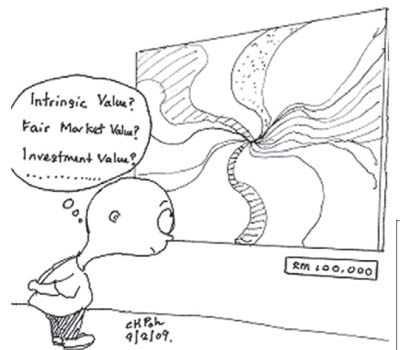 Read about how traditional Business Intelligence and Trend Analysis is being augmented by Predictive Business Intelligence and Complex Event Processing, and how these cutting-edge analysis techniques can positively impact your company, regardless of your industry vertical.
Read about how traditional Business Intelligence and Trend Analysis is being augmented by Predictive Business Intelligence and Complex Event Processing, and how these cutting-edge analysis techniques can positively impact your company, regardless of your industry vertical.
When it comes to predicting future trends in business, the traditional approach has always been to crunch historical data from the past in order to predict trends that are coming down the line. This is especially true in the financial realm: for generations, stockbrokers and financial analysts have used charts, graphs, and reports on economic trends to steer their long-term strategies and positions in the market. Now, those kinds of tools have even made it to the amateur online trader, and the perception is that these powerful, dynamic processes are giving people even more power to control and leverage their own investments.
The same is true for a wide range of business intelligence (BI) tools. Regardless of a company’s industry vertical, there are now plenty of robust BI tools that process old data in the hopes of unlocking future trends. However, the most cutting-edge business planning techniques are now revolutionizing the standard approach of looking to the past in order to predict the future.
Often coined “Predictive Business Intelligence” (PBI) or “Complex Event Processing,” (CEP) a term used frequently by software giant TIBCO, business integration specialists are now adding a new dimension to predicting future trends. In addition to leveraging historical data to identify consistent trends, Predictive Business Intelligence also factors in the present in order to further focus future business trends. Combined with configurable business rules, adding in the element of real-time business events with historical data is proving to be a powerful means of accurately detecting business patterns and reacting accordingly.

Philosophically speaking, business conditions and events that are occuring in the present offer a business analyst the most accurate data possible in predicting the future. While we accept as a rule that history repeats itself, the fact remains that specific, one-of-a-kind events are constantly occuring in the world that can alter even the most long-established market trends. Predictive Business Intelligence and Complex Event Processing gives businesses the flexibility to use data and perspective from the present in order to account for these new and ever-changing variables.
Examples of Predictive Business Intelligence and CEP in Action
It doesn’t take too much thought to begin to realise how factoring real-time events into business analysis is easily applied to a wide range of business sectors. Consider these realistic scenarios where Predictive Business Intelligence and Complex Data Processing is aptly used:
Telecommunications: Imagine that telecommunication industry analysts identify a trend indicating that if a customer calls with the same complaint 3 times in a short amount of time and the complaint is not resolved, it is likely that the customer will switch providers. Predictive Business Intelligence can add another dimension to this analysis by factoring in potential service interruptions or problems caused by the implementation of new systems, regulations, or environmental factors, which could lead customers to call in with significant service issues that will need to be addressed quickly and effectively. In this way, Predictive Business Intelligence gives telecommunication providers advanced warming, allowing them to provide a better experience on the second or third call for their customers.
Retail: Historical trends show that consumers alter their buying behaviour during extreme changes in seasonal weather — be it a heat wave in the summer or alarmingly cold temperatures in the winter. These conditions can strain inventories, leading retailers to sell out of stock too quickly. Predictive Business Intelligence allows retail analysts to forecast the demand for their products by conflating seasonal sales trends and past inventory fluctuations with present conditions, which, in turn, enables suppliers to plan production and delivery schedules more efficiently.
Supply Chain Management: Depending on industry sector, supply chain logistics can amount to between 5 and 50 percent of a product’s delivered cost. These companies want to know who are their most loyal customers, which deliveries are most profitable, where to locate distribution centres, optimal points to replace delivery teams, and how to better locate and track delivery items. At the same time, present economic conditions can skew what past trends would indicate are the most profitable. In this way, Predictive Business Intelligence can uncover a new trend that up until the present was not as profitable as it may become in the near future.
Manufacturing: Manufacturing companies need to know what goods are in transit, what is about to enter the warehouse, what is being shipped from suppliers, in order to dynamically route goods in-transit. These factors are ever-changing for manufacturing, and while some trends exist (for instance, in some commodity-based goods), even the slight variations and fluctuations in the present need to be accounted for above trends that stretch back 50 years or more.
Healthcare: Healthcare providers will be able to combine their patient history data with real-time events, using telehealthcare to act on early warning signs and provide treatment or intervention before conditions worsen. As a result, Predictive Business Intelligence can greatly improve service levels and have a positive impact on peoples’ long-term health.
As you can see, Predictive Business Intelligence is not as esoteric as it may seem — it is simply about having the tools and know-how in place to process real-time factors along with historical data. While the majority of the tools and focus in business analytics still relies on looking to the past for answers about the future, the real future of business intelligence is all about being able to see the future in what’s happening now.
Be sure to check back next week when we explore TIBCO‘s role in providing the technology to power Predictive Business Intelligence.

